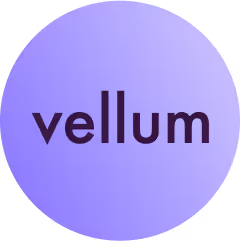AI agents have quietly crossed the chasm. In 2025, seven out of ten companies say agents are their primary automation lever, and two out of three already see productivity gains [1][2]. This is a larger signal of how industries are pushing to become AI native, leaving players not seeking an AI transformation losing ground quickly.
Let’s set expectations. You shouldn’t replace an entire team to prove the benefits of agentic AI. You need a bullet proof AI transformation strategy and an AI workflow builder that lets you move fast without breaking governance.
This article covers real-world AI agent use cases by industry, showing how organizations are leveraging agentic automation to modernize workflows, reduce costs, and unlock new forms of operational intelligence.
The key to AI transformation: AI agents
AI agents are the core engine of AI transformation. They’re autonomous, goal-oriented systems that reason over context, interact with your data and tools, and take purposeful actions to deliver measurable business outcomes.
They function as a practical and powerful extensions of your team members, able to assist and ramp up their efficiency by executing certain tasks end-to-end.
Using AI agents is a step in fundamentally changing how we work. Instead of spending precious brain power on repetitive and tedious tasks, you and your teammates can automate that work and focus on solving higher priority, complex problems for your org.
That’s why adoption is accelerating: most organizations have began significantly scaling AI agents across all the company’s functions. The core outcome across industries is ROI: faster execution, lower costs, and better customer experiences [1][3].
The AI agent ecosystem
Every AI agent is a connected ecosystem of archetypes, tools, and frameworks that shape how it behaves. Not all agents are capable of the same things, agentic behavior ie how an AI agent reasons, plans, and acts—exists on a spectrum that defines its degree of autonomy and decision-making capability. Here’s an overview to help you understand the common types of AI agents and how they can come of use in your work
Common types of agents
- Conversational agents handle customer and internal support by tapping into knowledge bases, ticketing systems, and CRM data.
- Decisioning agents prioritize risks, score leads, forecast demand, and make recommendations based on real-time data.
- Orchestration agents connect actions across SaaS, ERP, and RPA systems to complete multi-step workflows automatically.
- Generative agents create content, code, and summaries that stay aligned with brand tone and quality standards.
- Multi-agent systems combine these strengths—one agent plans, another researches, a third executes, while a “critic” monitors quality and feedback loops.
Agent building tools and frameworks
Building AI agents has become much more accessible thanks to the rise of no-code tools and developer frameworks. Each plays a distinct role in how teams bring agents from concept to production.
No-code tools make it easy to design, prompt, and deploy agents without writing code. They provide visual builders for connecting all your business critical tools and managing workflows in a single workspace. For many teams, these tools are the fastest path to experimentation by enabling non-technical users fine-tune prompts, test responses, and chain actions together safely. They’re ideal for quickly building and automating tasks with the best having agent builders that turn prompts into functional agents in minutes.
Agent frameworks are developer-focused foundations for building and scaling agents. They give engineers full control over how agents reason, plan, and act by defining the logic behind state, memory, and tool use. Frameworks provide APIs and SDKs that let developers script agent behavior, chain reasoning steps, and integrate with external systems programmatically. This makes them ideal for teams that need to customize workflows, enforce governance, or build complex multi-agent systems that operate reliably across large-scale environments.
Platforms like Vellum combine the best of both no-code agent building tools and developer focused agent frameworks that provide every team in your organization the capabilities to become AI native.
Industries transformed by AI agents
Sales
Sales organizations are using AI agents see a 25-47% productivity increase from time savings on repetitive tasks, allowing teams to focus on selling activities [4]. Agents are used to automate tedious tasks like enrich leads, score intent, and draft personalized outreach, helping reps focus on converting conversations instead of data entry.
Since AI agents to integrate with all your business tools, they keep sales teams equipped with real-time insights by automatically updating CRM records, surfacing competitive intelligence, and refreshing playbooks with the latest deal outcomes.
In forecasting and planning, agents analyze pipeline health, deal velocity, and activity patterns to deliver more accurate revenue projections and identify where deals may stall.
Together, these capabilities create a faster, cleaner, and more predictable sales process where teams spend less time managing systems and more time closing high-quality opportunities. Sales organizations effectively using AI agents are seeing higher conversion rates, stronger pipeline visibility, and consistently improved win rates across the organization.
{{sales}}
Across the companies we work with, the sales teams seeing the strongest results start by automating the high-impact moments in the funnel where speed and accuracy have the easiest time compounding. These are the agents we’ve seen deliver the fastest wins and most measurable lift in pipeline movement and forecast confidence:
RevOps
- Pipeline Acceleration Agent: enriches leads, scores intent, drafts tailored outreach, syncs CRM
AE Team
- Deal Strategy Copilot: surfaces personas, risks, next best actions from notes and call transcripts
Sales Enablement
- Battlecard & Playbook Updater: monitors competitors, updates talk tracks, pushes collateral
Finance & Leadership
- Forecasting Agent: analyzes pipeline health and velocity to project revenue with alerts
Customer Service and Support
Customer experience teams are using AI agents to deliver faster, more consistent support across every touchpoint with 90% of CX leaders report positive ROI from implementing AI tools for customer service agents [5]. These ROI gains are seen because ai agents are particularly effective in resolving common requests instantly by grounding answers in approved knowledge bases and executing safe actions like refunds or password resets, while routing complex cases to the right human or bot with full context attached.
During and after each conversation, agents can summarize transcripts, tag dispositions, and verify compliance with policy and script to give managers clear coaching insights without manual reviewing calls and transcripts.
Customer success teams are realizing huge value from AI amounting to shorter handle times, higher CSAT, and a consistent, policy-aligned experience for every customer interaction.
{{customer}}
The support organizations we partner with find success by targeting the biggest friction points in their customer journeys. Below are the agents that consistently reduce handle times, raise CSAT, and keep every interaction aligned from first contact to resolution:
Support Ops
- Tier-0 Self-Service Agent: answers common questions from KB, executes safe actions, logs to CRM
Contact Center
- Intelligent Triage Agent: routes by intent, urgency, sentiment with full context
QA & Compliance
- Post-Interaction Summarizer: drafts summaries, tags dispositions, checks scripts
Marketing
Marketing organizations are using AI agents to accelerate content production, improve campaign precision, and maintain consistent brand execution at scale with 76% of organizations achieving marketing automation success within 1 year [6]. Agents can generate briefs, draft on-brand assets for different personas and funnel stages, and repurpose top-performing content across paid, social, and owned channels all while staying grounded in the company’s voice and creative guidelines.
From content ideation to campaign reporting, AI agents help marketing teams move faster, maintain quality, and focus their time on strategy and storytelling rather than manual coordination. As a result of integrating AI Agents into your marketing stack, you will fine stronger brand consistency, faster production cycles, and a sharper feedback loop between the market signals and creative execution.
{{marketing}}
Marketing teams achieving the greatest efficiency gains focus their agents on content velocity, personalization, and campaign intelligence. Here are the agents we’ve seen drive the biggest impact across content, growth, and creative operations:
Content
- Production & Repurposing Agent: creates briefs, drafts assets by persona and stage, repurposes winners
Growth
- Creative & Audience Optimizer: tests content variants, refines segments, gives distribution suggestions
Competitive Intel
- Market Watch Agent: tracks competitor messaging, pricing, launches, updates battle cards
Web Traffic & SEO
- SEO Content Writer Agent: researches content ideas, finds content and keywords gaps, and turns everything into SEO optimized, onbrand article
Financial Services
Financial institutions are using AI agents to strengthen compliance, streamline operations, and personalize customer experiences across the entire all processes with an astounding 43% of companies using AI in financial services saw a big boost in operational efficiencies [7].
In risk and compliance, agents aggregate signals across transactions, geographies, and customer profiles to detect fraud and money laundering with greater precision, ultimately reducing false positives and helping analysts focus on high-value investigations. They are used to generate audit-ready summaries, maintain immutable trails, and draft Suspicious Activity Reports automatically, giving compliance officers speed without sacrificing control.
On the customer side, agents act as intelligent financial assistants that analyze cash flow, build debt reduction plans, and recommend suitable products based on individual goals and regulatory requirements.
In trading and advisory functions, surveillance agents monitor communications and trades in real time, flag anomalies, and surface patterns that need human review.
Together, these capabilities help financial organizations reduce operational overhead, improve compliance accuracy, and deliver faster and more transparent client experiences while maintaining compliance.
The firms we work with are realizing major gains by deploying agents where compliance, risk, and client experience intersect. These are the agents consistently tightening AML and audit processes while enabling faster, more personalized financial service delivery:
Fraud & AML
- Alert Triage Agent: aggregates signals, drafts investigation narratives, reduces false positives
Compliance
- SAR & Audit Agent: compiles evidence, drafts SARs, maintains immutable trails
Retail Banking
- Personal Finance Agent: builds cash-flow views, debt payoff plans, product suitability checks
Markets
- Trade & Comms Surveillance Agent: monitors activity and communications, flags exceptions
Healthcare
Healthcare organizations are using AI agents to streamline the entire patient and provider journey and getting an $3.20 return for every $1 invested in AI within 14 months [8]. Agents are used to take and read clinician notes, extract key data, and cross-check payer policies to automate prior authorizations and claims submissions, cutting turnaround times and reducing denials.
At the point of care, agents assist with triage and chart preparation by summarizing patient history, highlighting red flags, and surfacing relevant clinical guidelines so decisions happen faster and with greater accuracy. They also assist in managing downstream workflows like scheduling follow-ups, confirming benefits, booking labs, and sending adherence reminders in plain language.
On the administrative side, agents monitor documentation for compliance with CPT and ICD codes, track quality metrics, and prepare audit-ready summaries.
Together, these capabilities free clinicians from repetitive administrative tasks, improve care coordination, and accelerate reimbursement ultimately helping healthcare systems deliver better patient outcomes with significantly reduced operational friction.
{{healthcare}}
Healthcare systems seeing the strongest outcomes use agents to connect the dots between clinical operations, administration, and reimbursement. Below are the agents that most often reduce administrative load, improve coordination, and speed up reimbursement cycles:
Revenue Cycle
- Prior Auth & Claims Agent: extracts from notes, checks payer policy, submits, tracks status
Clinical Ops
- Triage & Chart Prep Agent: summarizes history, highlights red flags, surfaces guidelines
Care Coordination
- Follow-up & Adherence Agent: books labs, confirms benefits, sends plain-language nudges
Quality & Compliance
- Coding & Audit Agent: checks CPT and ICD, prepares audit packs, tracks measures
Insurance
Insurers are using AI agents to transform every part of the policy lifecycle to see an up to 30% operational cost savings through AI-driven automation of claims processing, policy issuance, and customer support [9]. Agents can review applications, analyze risk factors, and cross-check disclosures against external data to accelerate underwriting decisions while maintaining compliance.
During claims, they extract data from forms, medical records, and photos, verify coverage, and draft settlement recommendations for adjuster review, cutting resolution times from weeks to days.
On the operational side, agents monitor regulatory updates, update policy language, and ensure documentation meets evolving standards. Customer-facing agents handle quote requests, explain benefits, and proactively flag gaps in coverage before renewal.
Behind the scenes, fraud detection agents identify anomalies in claims patterns, flag potential abuse, and generate auditable investigation summaries.
Together, these capabilities reduce manual overhead, improve accuracy, and help insurers deliver faster, more transparent experiences for policyholders. AI agents are crucial in turning legacy and painfully slow workflows into intelligent, connected systems that extend all the capabilities of your insurance team.
{{insurance}}
We’ve seen the insurers we work with already getting ahead by using agents to automate underwriting, claims, and customer retention in one integrated motion. These are the agents that consistently shorten cycles, prevent leakage, and strengthen policyholder satisfaction:
Underwriting
- Risk Assessment Agent: validates disclosures, ingests external data, recommends terms
Claims
- FNOL to Settlement Agent: extracts facts, verifies coverage, drafts recommendations for adjusters
SIU
- Fraud Detection Agent: spots anomalies across claims, links entities, produces case briefs
Customer
- Policy Service Agent: answers benefits, processes endorsements and renewals, flags gaps
Retail and E‑commerce
Retailers and e-commerce brands are using AI agents to optimize the entire commerce lifecycle including dynamic pricing and merchandising to personalized shopping and post-purchase support. Agents continuously analyze demand, inventory, and competitor data to recommend price adjustments, bundle offers, and promotion strategies that protect margin while clearing stock.
AI agents are playing a significant part in generating and enriching product content by turning minimal specifications into SEO-optimized titles and descriptions that match real search behavior and reduce return rates.
In the customer journey, conversational shopping agents act as intelligent assistants, helping buyers compare models, check compatibility, and complete checkout with confidence. Behind the scenes, agents synchronize product data across PIM, ERP, and fulfillment systems to keep listings accurate and inventory aligned.
Together, these capabilities drive higher conversion rates, stronger margins, and smoother experiences with an expected 25% increase in conversion rates from AI-assisted shopping, with shoppers using AI assistants being 25% more likely to complete a purchase [10].
{{ecommerce}}
Retail and e-commerce businesses we work with are winning by deploying agents where pricing, product data, and customer experience converge. Here are the agents we’ve seen protect margin, lift conversion, and keep product information consistent across every channel:
Merchandising
- Dynamic Pricing Agent: adjusts price and bundles by demand and inventory, protects margin
Catalog
- Product Content Agent: normalizes attributes, writes SEO titles and descriptions, reduces returns
CX
- Conversational Shopping Assistant: compares models, checks compatibility, completes checkout
Operations
- Inventory & Listing Sync Agent: keeps PIM, ERP, fulfillment aligned, prevents stockouts
Manufacturing and Logistics
Manufacturers and logistics providers are using AI agents to create smarter, more resilient operations across production, quality, and supply chain management. An overwhelming 61% of manufacturing executives report decreased costs as a direct result of AI in supply chain [11].
Agents monitor equipment data in real time to predict failures, schedule maintenance, and automatically update ERP and inventory systems before downtime occurs.
Quality teams use agents to reduce waste and improve first-pass yield by automating sensor reading analysis and visual inspections, identifying defects, and tracing logistics issues back to root causes.
In the supply chain, agents simulate disruptions, re-route shipments, reprioritize orders, and communicate accurate ETAs to customers when conditions change. They also track supplier performance, manage inventory buffers, and trigger corrective actions automatically.
Together, these systems create a closed feedback loop across the factory floor and logistics network resulting in a significant reduction in delays, improving asset utilization, and giving operators the agility to adapt within minutes instead of days.
{{supply}}
The companies that utilize Vellum in the supply chain industry are finding success with agents that connect maintenance, quality, and supply chain operations into a single adaptive system. Below are the agents that reliably cut downtime, improve yield, and enhance responsiveness across the network.
Maintenance
- Predictive Maintenance Orchestrator: reads sensor data, schedules work orders, updates ERP
Quality
- Vision Inspection Agent: detects defects, links to process parameters, suggests root causes
Supply Chain
- Resilience & Re-route Agent: simulates disruptions, reprioritizes POs, sets ETAs
Planning
- Demand & Production Planner: blends orders and signals, proposes schedules and capacity moves
Human Resources
HR teams are using AI agents to optimize the entire employee lifecycle resulting in a 75% reduction in hiring time and increased diversity in talent pools [12]. Agents streamline recruiting by parsing resumes, matching candidates to roles, and generating bias-aware summaries for hiring managers, reducing time-to-hire and improving candidate experience.
Once a new hire is selected, agents coordinate onboarding logistics by sequencing tasks like equipment setup, app access, and training completion to ensure day-one readiness.
Beyond hiring, agents continuously analyze sentiment data from surveys, communication tools, and performance systems to flag potential retention risks early and suggest practical interventions.
Together, these capabilities enable HR organizations to operate more proactively with AI agents contributing to building stronger teams, improving employee satisfaction, and turning people operations into a measurable driver of organizational performance.
The HR organizations seeing the most measurable transformation begin by using these agents to most effectively shorten time-to-hire, improve onboarding, and strengthen engagement:
Talent Acquisition
- Screening & Matching Agent: parses resumes, scores skills, drafts bias-aware summaries
People Ops
- Onboarding Orchestrator: sequences access, equipment, training, tracks completion
People Analytics
- Sentiment & Retention Agent: finds risk patterns, suggests interventions, alerts managers
Workforce Planning
- Headcount & Skills Forecaster: models gaps, recommends internal mobility or hiring
Legal
Legal teams using AI agents should expect to save 240 hours per year per legal professional from automating routine tasks like document review, legal research, and contract analysis [13].
They are used in tandem to monitor new regulations and policy changes to keep documentation current, manage e-discovery by classifying and summarizing large data sets, and maintain searchable knowledge bases of prior cases and rulings.
In day-to-day operations, agents coordinate deal desk approvals, check compliance in communications, and ensure every version and decision stays logged for audit.
Together, these capabilities help legal teams move from reactive to strategic by reducing risk, shortening review cycles, and bringing greater consistency to how work gets done across the organization.
{{legal}}
We see legal teams achieving real operational leverage use agents to scale their expertise across contracts, compliance, and case management. Here are the agents we’ve seen deliver the greatest gains in speed, accuracy, and consistency across the legal function.
Commercial
- Contract Review Agent: checks clauses against playbooks, proposes redlines, logs versions
Compliance
- Policy & Regulatory Agent: tracks changes, drafts updates, maps impacts to documents
Litigation
- E-discovery Summarizer: classifies documents, extracts entities, builds evidence maps
Ops
- Deal Desk Agent: verifies terms and approvals, speeds routing, maintains audit trails
{{ebook-cta}}
How to begin using AI agents
From our years of helping organizations become AI native, here is a simple way to start using and implementing AI agents:
1/ Try it yourself first
The best way to start is by building one AI agent for yourself with agent builders like Vellum. In a single day, create a small agent that helps you with your own work. Connect one or two tools, like your email, and have it do a simple task like summarizing tasks or drafting follow-ups. Track minutes saved in a week. If you can prove value for yourself, it is much easier to expand to the team. Odds are after the first win, momentum kicks in and you’ll continue building.
2/ Pick one team use case and one KPI
Choose a single workflow with clear payoff. Tie it to one metric you can move in a quarter, like cutting support backlog 30% or reducing claim cycle time by half. Map where key data for your use case lives, who owns it, and what decisions the agent can make. Write guardrails as simple rules the agent must follow and proceed with building.
3/ Run a small internal cohort
Form a cross-functional cohort of 5–10 motivated users to trial automating their own work. Give them clear scope, access to data and tools, and a weekly cadence for sharing learnings. Keep risky actions behind human review, compare before vs after on the target KPI, and document what worked so it is easy to repeat.
4/ Report wins and stand up an AI council
Package results into a simple one-pager for execs and function leads: problem, approach, KPI movement, lessons, next steps. If the cohort meets the goal, formalize an AI council with reps from each function plus security and legal to plan an org-wide rollout, prioritize the next 3 use cases, and set shared standards for guardrails, access, and measurement.
To learn more explore our AI transformation playbook with clear, proven steps to roll out AI across your org →
Build agents in minutes with Vellum
Vellum lets anyone create functional AI agents that connect to your business critical tools and systems to automate your team’s tasks and extend their capabilities as a contributor to the organization.
Teams can prompt Vellum to build any agent for any task and the platform will build it in minutes. Vellum eliminates all the friction of agent building by enabling integration setup, agent optimization, and debugging from the chat window.
{{time-cta}}
Teams that quickly build and refine agents in Vellum can publish them as AI apps with one click. The platform creates the app automatically and lets you share it by link with any teammate. This gives everyone a simple way to use and build with AI, creating a clear path to becoming AI-native and delivering measurable ROI.
{{roi-cta}}
Beyond fast agent creation and sharing, Vellum gives enterprises everything they need to scale AI safely and collaboratively. Teams can co-build and review agents in shared workspaces, customer-managed VPC or on-premises environments, and rely on enterprise-grade security with SSO, RBAC, and full audit visibility.
For developers, the SDK offers deep control over tools, logic, and integrations, so every agent aligns with internal systems and governance standards.
{{general-cta}}
References
[1] PwC. 2025. PwC's AI Agent Survey.
[2] Multimodal. 2025. 10 AI Agent Statistics for Late 2025.
[3] McKinsey. 2025. The State of AI: Global Survey 2025.
[4] MarketsandMarkets. 2025. Sales Automation Guide 2025.
[5] Pylon. 2025. 50+ Customer Support Statistics & Trends for 2025.
[6] Amra And Elma LLC. 2025. Top 20 Machine Learning Marketing ROI Statistics 2025.
[7] IBM. 2025. AI Sales Enablement.
[8] Beam AI. 2025. Top 3 AI-Powered Customer Service Platforms in 2025 (and How They’re Changing CX Forever).
[9] Cubeo AI. 2025. 25 AI Marketing Statistics Every CMO Should Know in 2025
[10] HelloRep. 2025. The Future of AI in Ecommerce: 40 Statistics on Conversational AI Agents for 2025.
[11] eesel.ai. 2025. AI Customer Service Metrics (Guide).
[12] Hurree. 2025. Measuring the ROI of AI in Marketing: Key Metrics and Strategies for Marketers.
[13] McKinsey & Company. 2025. The State of AI (QuantumBlack)



Latest AI news, tips, and techniques
Specific tips for Your AI use cases
No spam
Each issue is packed with valuable resources, tools, and insights that help us stay ahead in AI development. We've discovered strategies and frameworks that boosted our efficiency by 30%, making it a must-read for anyone in the field.

This is just a great newsletter. The content is so helpful, even when I’m busy I read them.

Experiment, Evaluate, Deploy, Repeat.
AI development doesn’t end once you've defined your system. Learn how Vellum helps you manage the entire AI development lifecycle.







.avif)

